ValidExperimentAbsorbanceIntensityQ
ValidExperimentAbsorbanceIntensityQ[samples]⟹bools
checks whether the provided samples and specified options are valid for calling ExperimentAbsorbanceIntensity.
Details
Input

Output

Absorbance Measurement Options

Aliquoting Options
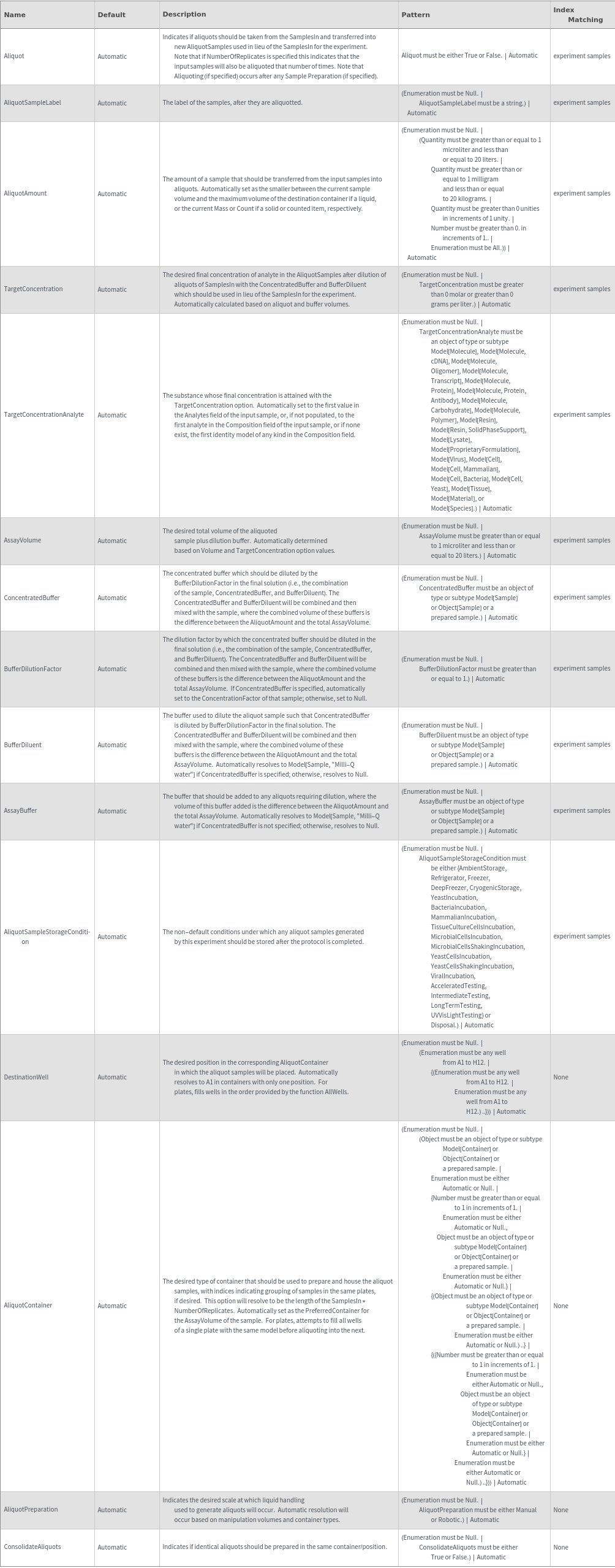
Data Processing Options

Injections Options
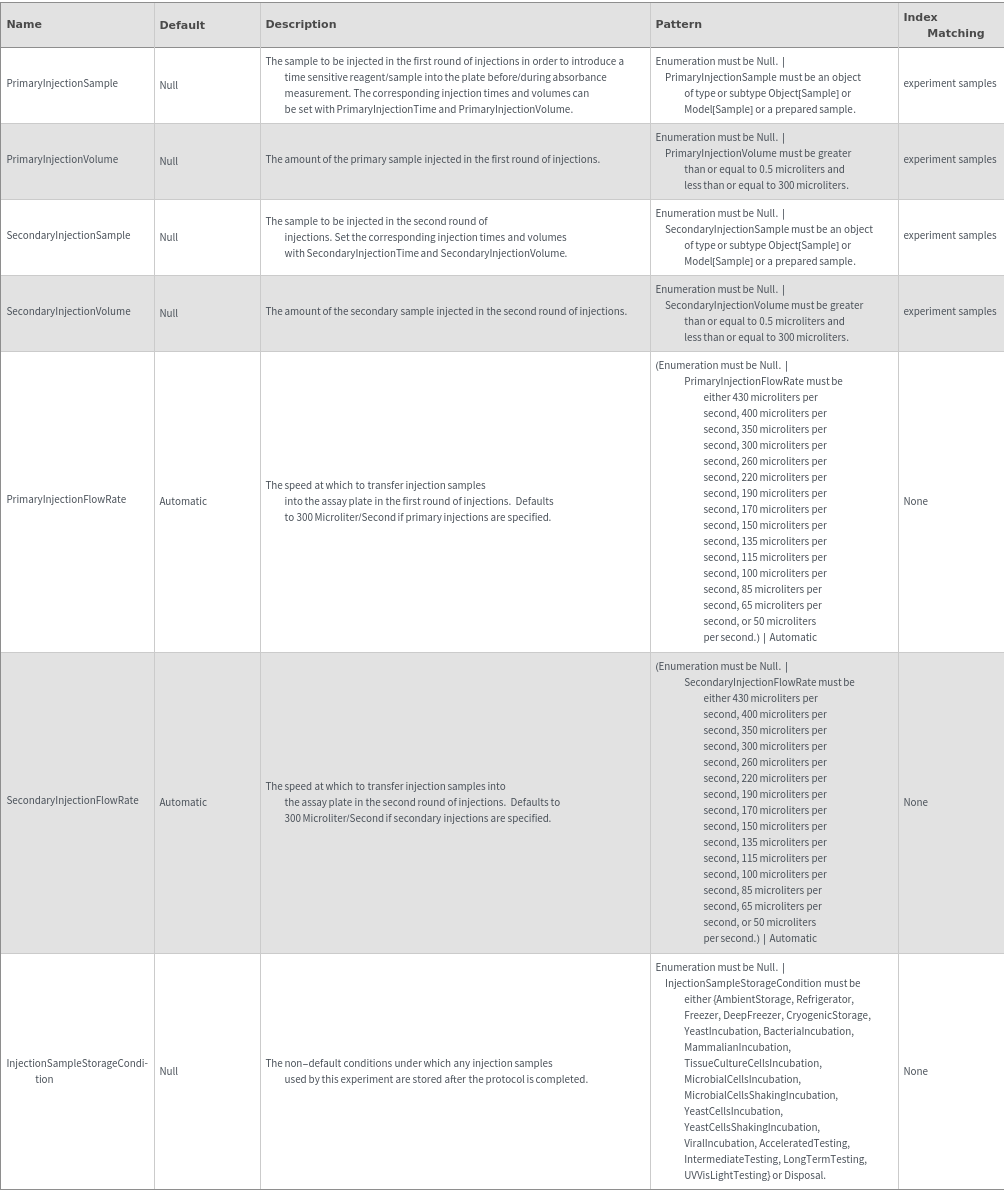
Optics Options

Organizational Information Options
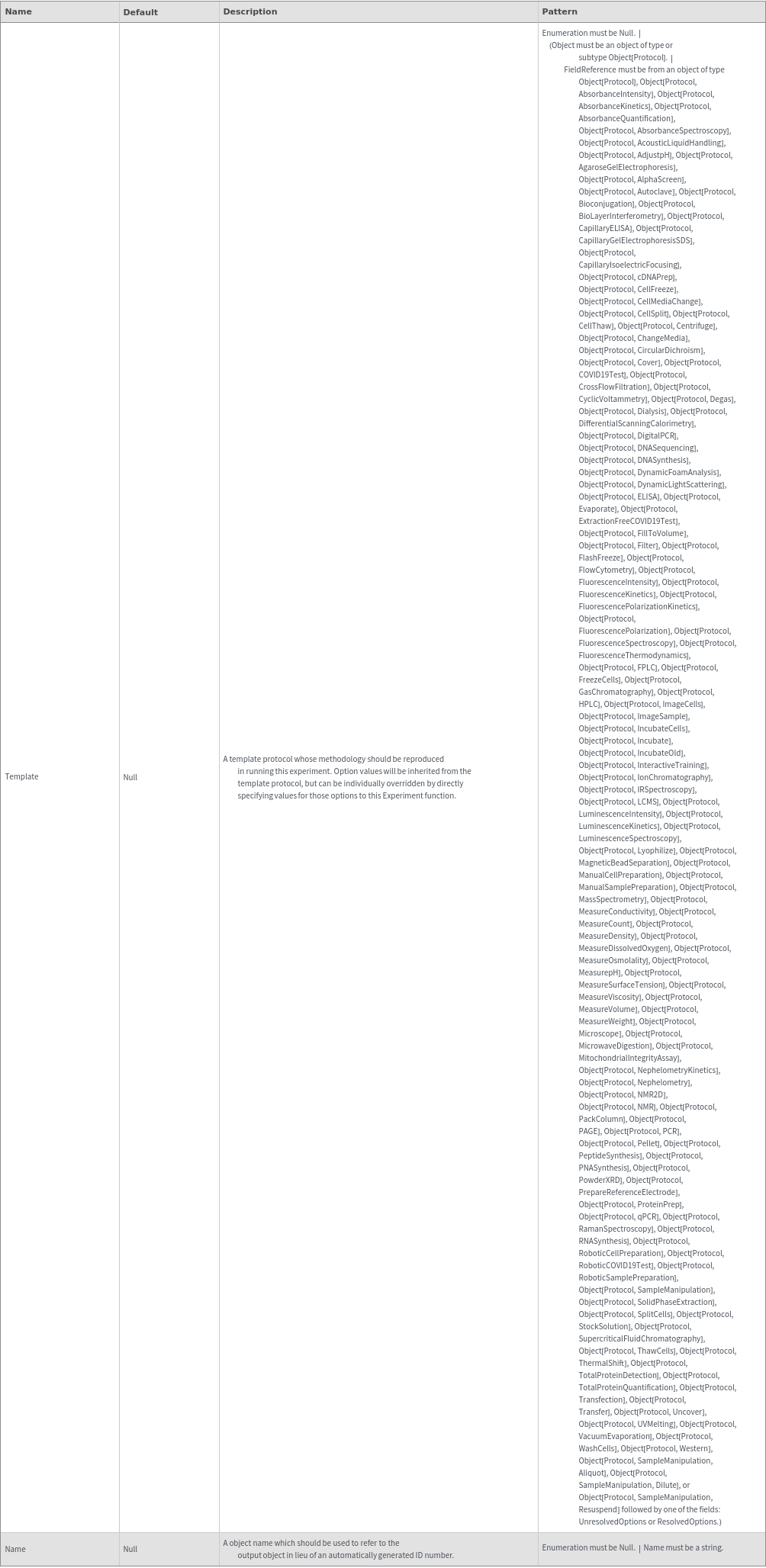
Post Experiment Options

Preparatory Centrifugation Options

Preparatory Filtering Options

Preparatory Incubation Options
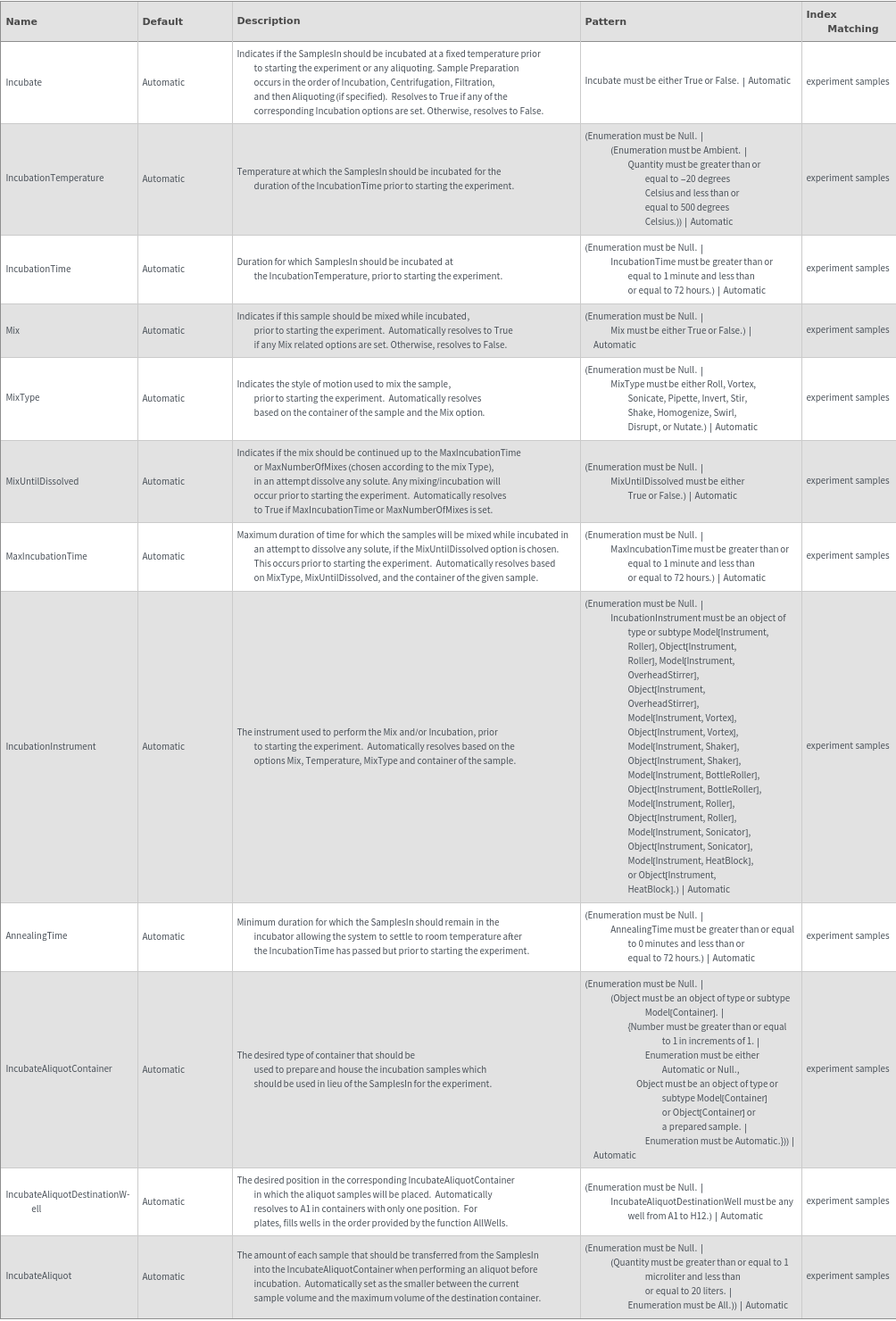
Quantification Options
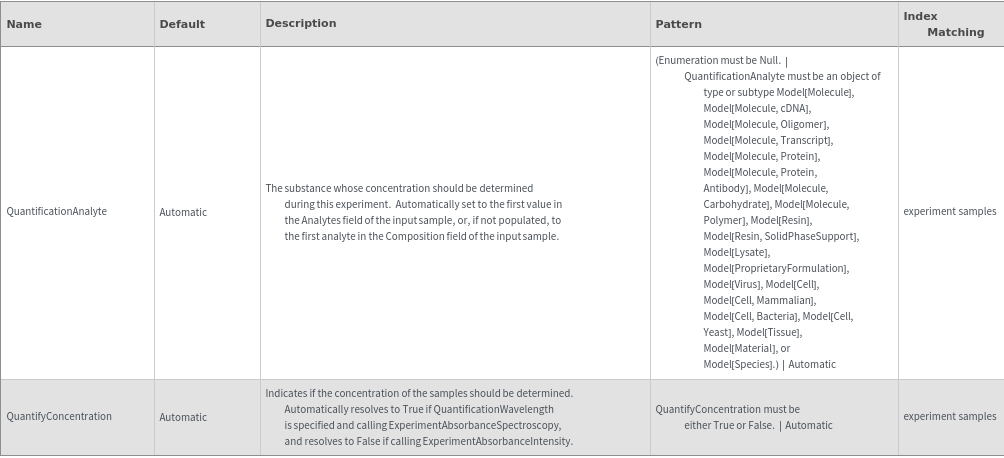
Sample Handling Options
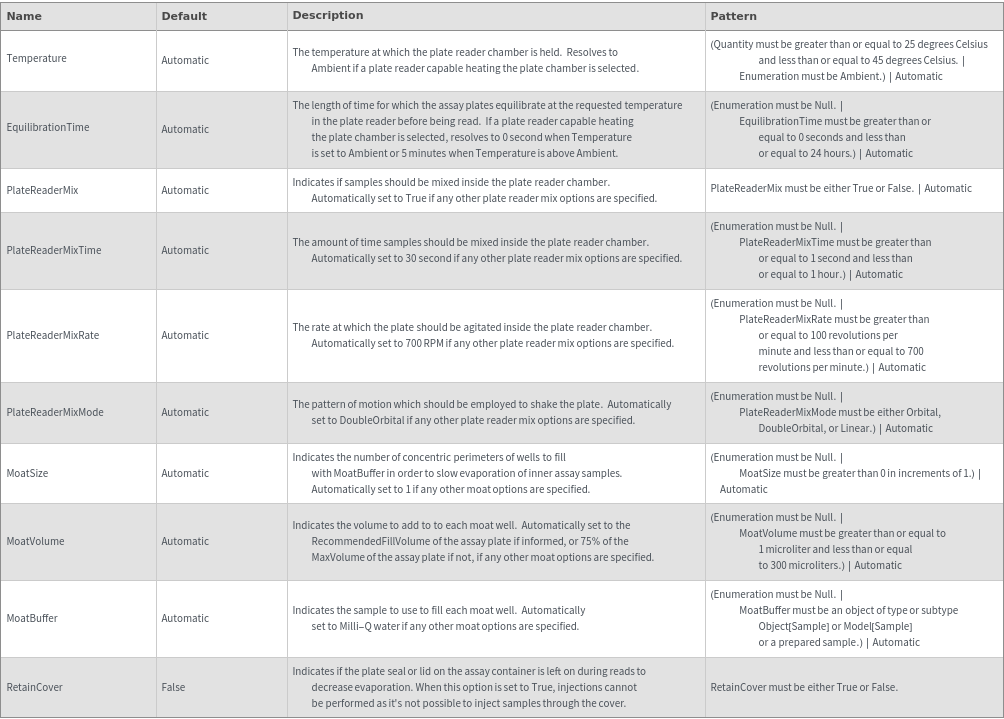
Sample Preparation Options

Sampling Options

General Options
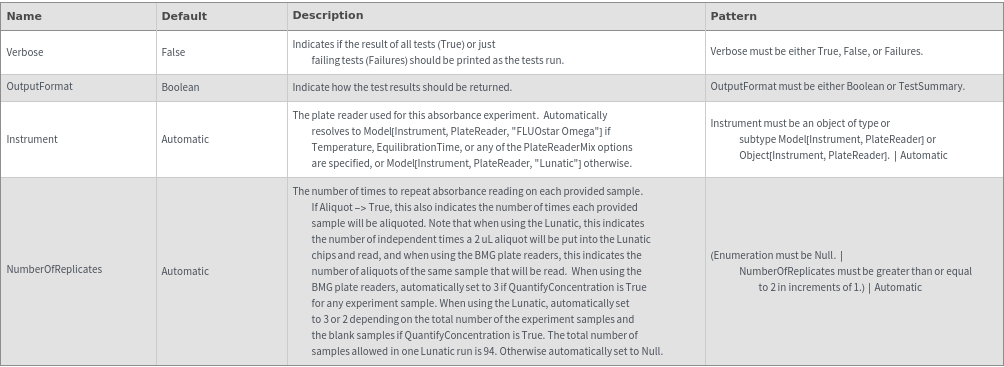
Examples
Basic Examples (4)
Options (36)
Blanks (4)
Indicate what the blank(s) should be for this experiment:


Indicate what the blank(s) should be for this experiment, expanded for multiple samples:


If BlankAbsorbance -> True and Blanks is not specified, resolve to Milli-Q water:


If BlankAbsorbance -> False and Blanks is not specified, resolve to Null:


BlankVolumes (6)
Indicate the volume of blank to use for each sample:


Indicate the volume of blank to use for each sample, using multiple samples:


If BlankAbsorbance -> True, BlankVolumes is not specified, and Instrument -> a BMG plate reader, resolve BlankVolumes to the volume of the corresponding sample:


If BlankAbsorbance -> True, BlankVolumes is not specified, and Instrument -> a Lunatic, resolve BlankVolumes to 2 uL:


If BlankAbsorbance -> False and BlankVolumes is not specified, resolve BlankVolumes to Null:


Rounds specified BlankVolumes to the nearest 0.1 microliter:


EquilibrationTime (4)
ImageSample (2)
PreparatoryPrimitives (1)
QuantifyConcentration (3)
Temperature (4)
Wavelength (5)
Indicate the wavelength of the quantification that should be calculated:


If QuantifyConcentration is not specified and Wavelength is also not specified, resolve option to 260 Nanometer:


If QuantifyConcentration is True and Wavelength is not specified, resolve option to 260 Nanometer IF the ExtinctionCoefficients field is not populated in any sample's model (and throw a warning):


If QuantifyConcentration is True and Wavelength is not specified, resolve option to the first value stored in the sample's model's ExtinctionCoefficients field:


Rounds specified Wavelength to the nearest nanometer:

































